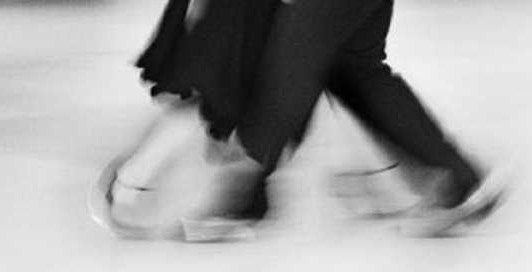Anyone who starts dancing Tango Argentino will inevitably hear the term “milonga” again and again after a short time.

So the question arises, what actually is “milonga”?
Since milonga means several different things, one can get somewhat confused, especially as a tango beginner. However, the answer is not too difficult.
Originally, the milonga was a form of musical message transmission.
News was spread by traveling singers, the Pajadores, similar to the “Bänkelsänger” in Germany or the Italian “cantastoria”. The songs they sang were called milongas.
Today instead the milonga is better known as a dance, a forerunner of the Tango Argentino, which originated from the Candombe, a ritual dance of the African slaves.
The Tango Argentino does not only include the Tango, but also the Milonga and the Vals Cruzado or Vals Criollo (the Porteño adaption of the Viennese Vals).
The milonga as a dance is somewhat comparable to the polka, which also influenced it (immigrants from Central and Eastern Europe had the polka with them in their musical luggage).
This influence Europeanized the originally African dance, smoothened it and took away some of its originality. For example, the drums, which carry the rhythm and are a defining element in the candombe, are completely absent in most milongas.
The milonga is usually faster, happier and, you might say, earthier than the tango and is often referred to as the “cheerful sister” of the tango.
In contrast to the tango (at least from orchestras like Di Sarli or Pugliese), in which the pause, pausing during the dance, is an important element, in the milonga the rhythm is continuous, driving, originally in 2/4 time, later more often in 4/4 time.
The rhythm of the milonga always makes me think of gauchos galloping across the pampas on their horses: Dam dada dam dam, Dam dada dam dam :-)
Here is an example of a fun milonga danced by Daniela Pucci and Luis Bianchi.
There are two different types of Milonga, the Milonga Lisa, in which one step is usually danced on every strong beat, and the “Milonga Traspié”, where the dancers dance small, quick steps in a double time rhythm (for example three steps, dancing also on the “weak” beats ), or deke a movement in a certain direction, only to take it back again immediately (Traspié).
Dancing playfully with the rhythm, that you can do even in the smallest of spaces, helps to interpret the music better and to dance more interestingly even on a crowded dance floor. Even if this may sound complicated for some, it isn’t, because at the Milonga you tend not to make complicated figures.
In a milonga tango is danced as well as vals and milonga.
That brings us to the next meaning of the word milonga.
Milonga is also the name of a tango dance event that usually takes place regularly. The veteran tango dancers in Buenos Aires, who have been dancing tango day after day and/or night after night at a milonga for many years, are therefore not called tangueros, but milongueros.
And last not least the word milonga has still another meaning.
It also designates the venue where a milonga takes place.
Originally, a milonga was the place where black Argentines (both slaves and free) met to dance and it has retained this meaning – the place where you go to dance – to this day.
So you can go to a milonga as a tango dancer and dance the milonga there, though mostly you will dance the tango which is played more often.
Yet the milonga is inseparable from the tango, just as the polka is inseparable from the Viennese waltz.
Dancing milonga is really fun and not difficult.
I keep hearing that “you can’t dance milonga until you’ve had some experience of dancing the slower tango”.
It is then often given the aura of being difficult and unsuitable for beginners.
I think that’s outright nonsense.
From the very beginning, even as a complete beginner, I loved dancing milonga.
Most of the time I found it even easier than dancing tango.
Of course, the milonga has a different character than the tango. But once you know that, it’s not hard to learn. If you want to dance tango, you should definitely learn milonga as well, so that you don’t have to leave the dance floor frustrated at a milonga tanda because “…we haven’t learned milonga yet…”.
This article might also be of interest to you
